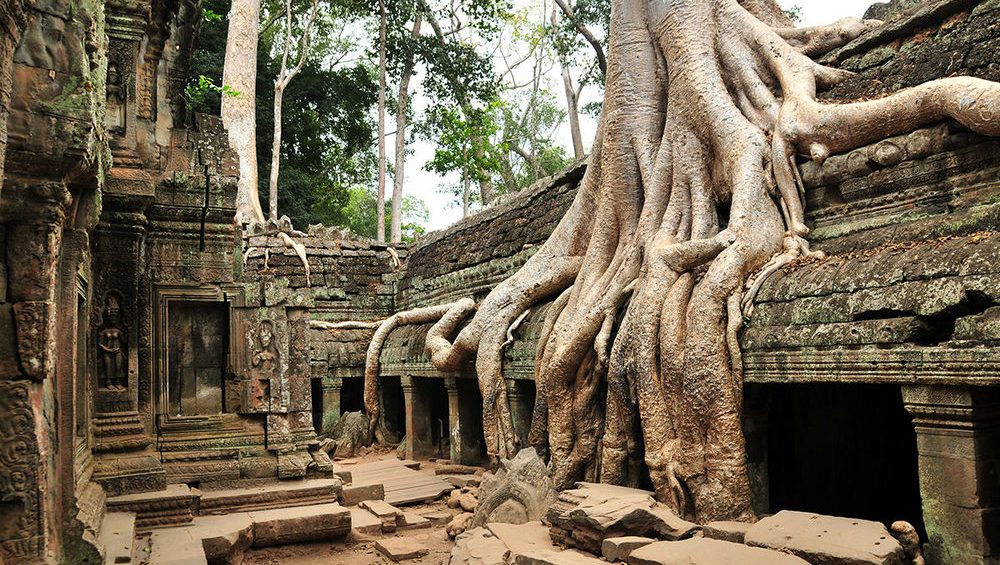

Siem Reap, a province in northwest Cambodia, is the gateway to the ruins of Angkor, the seat of the Khmer kingdom from the 9th–15th centuries. Among these magnificent ruins is Ta Prohm, one of the most popular and evocative of Cambodia's ancient temples. Ta Prohm was commissioned by King Jayavarman VII as a Mahayana Buddhist monastery and university. Unlike many other Angkorian temples, Ta Prohm has been largely left to the clutches of the living jungle. With its dynamic interaction between nature and man-made art, witnessing trees intertwining with ancient stone, this temple offers an unrivaled experience that conveys the raw beauty and power of the natural world.
Ta Prohm gained widespread exposure in the early 21st century and has since become synonymous with the idea of a 'jungle temple'. With increased global interest, the temple became a focal point for visitors to Cambodia, sparking a significant growth in tourism.
The history of tourism in Siem Reap can be traced back to the French exploration in the 19th century. After their early efforts in restoration, the area became a tourist draw with the establishment of the Grand Hotel d'Angkor in 1929. However, it was not until the late 20th century that tourism truly began to flourish. The end of political instability in the 1990s led to a steady increase in international visitors eager to see the temples of Angkor.
By the 2000s, Siem Reap had transformed into a major tourist hub. The town grew rapidly, with establishments ranging from small guesthouses to luxurious resorts to accommodate visitors. The infrastructure expanded, with improvements to roads and the creation of a new airport to support the burgeoning industry. In 2012, the Angkor Archaeological Park, where Ta Prohm is located, was Cambodia's top tourist attraction, drawing over two million international visitors annually.
In recent years, sustainable tourism has become a significant focus for Siem Reap. Efforts are being made to ensure that developments are eco-friendly and that the benefits of tourism are spread throughout the local community. For example, many tours now emphasize 'responsible' tourism practices, encouraging visitors to engage with, and support, community projects.
Additionally, there's a trend towards experiential travel, with visitors seeking to immerse themselves in the local culture. Activities such as traditional craft workshops, cooking classes, and visits to local villages are becoming increasingly popular.
Despite the challenges posed by global events such as the COVID-19 pandemic, which saw international travel restrictions heavily reducing visitor numbers, Siem Reap and its tourism industry are poised for recovery. The ongoing conservation work at Ta Prohm and other temples, along with the introduction of health and safety protocols, aim to ensure that the wonders of Angkor can be enjoyed for generations to come.
To conclude, Siem Reap's rich history, coupled with the timeless allure of Ta Prohm, continues to captivate the hearts of travelers from around the world. As the tourism trends evolve, Siem Reap and its temples stand as resilient symbols of cultural heritage and natural beauty.